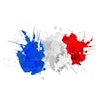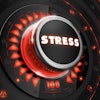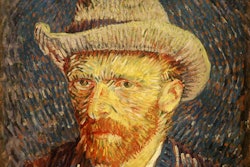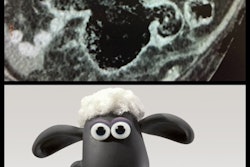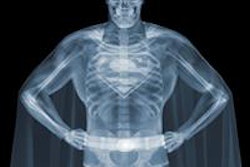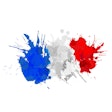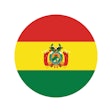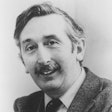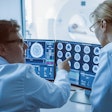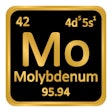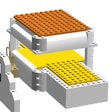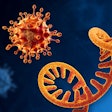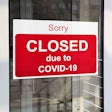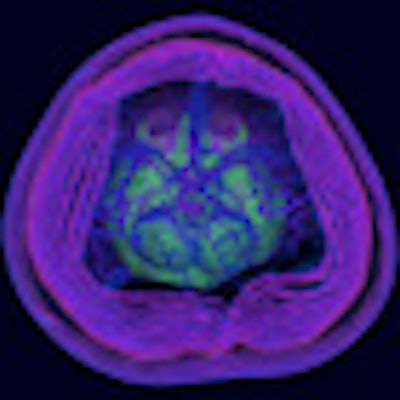
Where do radiology and fine art intersect? Nearly everywhere, an interdisciplinary group from Serbia has found. The researchers recently provided an overview of radiologic artworks, concluding that radiology has become an "important field of modern art."
The group from Belgrade explored more than 13,000 works of art in the literature, along with several thousand photographs identified in an online image search. They indentified 271 radiologic works -- primarily involving radiography, sonography, CT, and MRI -- produced by 59 artists.
The overlap of radiology and fine art seems to have taken almost all forms imaginable, ranging from more basic images of body parts to the use of images in collage and sculpture, radiographic photographs, and digital works. The study was published in the July edition of the American Journal of Roentgenology (Vol. 199:1, pp. W24-W26).
!['Network' by Dr. Kai-Hung Fung (© Kai-Hung Fung [Hong Kong] 2012).](https://img.auntminnieeurope.com/files/base/smg/all/image/2012/07/ame.2012_07_27_12_36_09_456_2012_07_30_radiology_art_network-brain.png?auto=format%2Ccompress&fit=max&q=70&w=400) "Network" by Dr. Kai-Hung Fung (© Kai-Hung Fung [Hong Kong] 2012).
"Network" by Dr. Kai-Hung Fung (© Kai-Hung Fung [Hong Kong] 2012)."Modern radiologic art, which bridges science and fine art, is a mixture of high technology and anatomic art, photography, drawing, painting, sculpture, and digital art," wrote Dr. Slobodan Marinković, a professor of neuroanatomy at the University School of Medicine, and colleagues. "It is also a specific and original method of artistic expression."
Marinković conducted the study with colleagues Dr. Tatjana Stošić-Opinćal, from the department of radiology at the University School of Medicine, and Oliver Tomić, from the department of fine art at Megatrend University's School of Art and Design in Belgrade.
Led by the hand
With Wilhelm Conrad Roentgen's 1895 discovery of x-rays -- and the iconic radiograph of his wife's hand -- radiology became an important diagnostic tool, but also an "effective way to visualize the hidden artistic beauty within the human and animal bodies," according to the authors.
Others soon began experimenting with Roentgen's new technology, such as Viennese photochemists Josef Maria Eder and Eduard Valenta. In 1896, Eder and Valenta modified 15 radiographs of animal skeletons, including an Aesculapian snake, a symbol of healing and medicine.
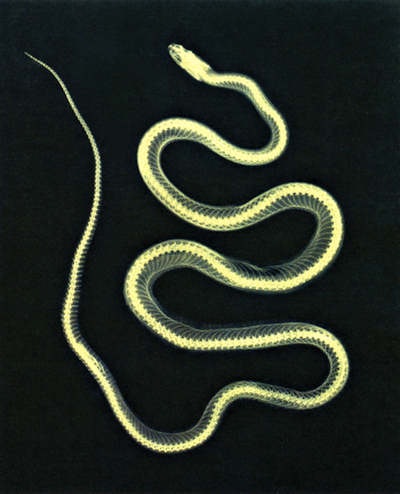 |
| "Aesculapian Snake" by Josef Maria Eder and Eduard Valenta. Image courtesy of Dr. Slobodan Marinković, AJR, and Oxford University Press. |
The radiograph of Anna Bertha's hand with its ring also inspired other hand-focused works: notably, a radiograph of the hand of Alexandra, the wife of Nicholas II, the last czar of Russia. Moving into present day, the authors also noted a series titled "Blue Hand X-Rays" from artist Becky Callicoat, as well as radiologist Dr. Christian Lauer's work titled "Homage to Dr. C. Roentgen."
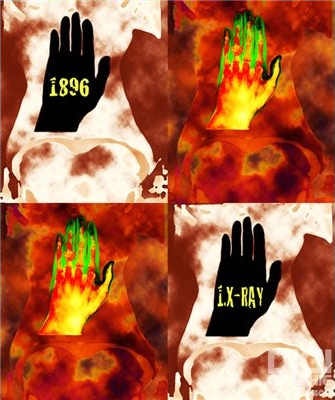 "Homage to Dr. C. Roentgen" by Dr. Christian Lauer. Image courtesy of Dr. Christian Lauer (www.christianlauer.eu).
"Homage to Dr. C. Roentgen" by Dr. Christian Lauer. Image courtesy of Dr. Christian Lauer (www.christianlauer.eu).Various body parts -- whether the subjects unto themselves or part of a larger piece -- appear in numerous works. In the 1930s, Diego Rivera included a radiograph of a skull in his "Man at the Crossroads" mural, the authors wrote. Wim Delvoye, a Belgian artist, created Gothic stained-glass windows featuring x-ray images of different body parts for the series "9 Muses." Diane Covert created collages of CT and x-ray scans of damaged body parts as part of her "Inside Terrorism" exhibit.
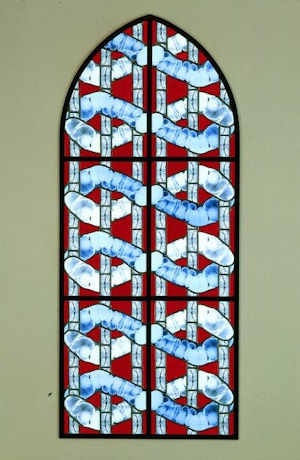 "Terpischore" by Wim Delvoye (© studio Wim Delvoye, Belgium).
"Terpischore" by Wim Delvoye (© studio Wim Delvoye, Belgium).Meanwhile, radiologist Dr. Kai-Hung Fung focused on the brain in "Network," working with 3D CT images, while other artists producing body- or organ-related works include Dr. Ashley Davidoff, Susan Aldworth, and Dr. Rodolphe Gombergh, according to the authors.
Radiology has also shown ties to photography ever since Roentgen's discovery, the group wrote. Artists created "negative" images similar to radiographs using various techniques, including camera-less photography, or placing items directly onto photographic paper. Man Ray and László Moholy-Nagy used this technique, while others, such as Andy Warhol and Yves Klein, created a color-negative effect in drawings, paintings, or other works.
Additional artists creating radiologic photographs include Albert Koetsier, Leslie Wright, and Steven Meyers, Marinković and colleagues noted.
 "Eucalyptus" by Albert Koetsier. Image courtesy of Albert Koetsier (www.beyondlight.com).
"Eucalyptus" by Albert Koetsier. Image courtesy of Albert Koetsier (www.beyondlight.com).Not to be limited to two dimensions, artists have also produced radiology-influenced sculpture -- the most original of which are by Marilène Oliver, according to the authors. They describe her work titled "Family Portrait," for which she printed full-body, life-sized MR images onto acrylic sheets. The sheets were then assembled into tall rectangular boxes, each one representing a family member. The recreations represent the wish to unite and preserve fractured family, according to a quote by Oliver in the AJR article.
 "Family Portrait" (Sophie detail) by Marilène Oliver. Image courtesy of Marilène Oliver (www.marileneoliver.com).
"Family Portrait" (Sophie detail) by Marilène Oliver. Image courtesy of Marilène Oliver (www.marileneoliver.com).In general, "radiologic images are the subject of art not only because of their own aesthetic quality, compositional value, and color decoration but also because they possess a certain symbolic, metaphoric, emotional, or conceptual meaning," the group wrote.
Spanning mediums and styles, artists have used radiologic images to create sculpture, photographs, and digital and other works, often with symbolic or metaphoric meanings, the authors concluded.
"Art and radiology congregated in [1896] in the Viennese radiograph, 'Aesculapian Snake,' and achieved the level of modern cyber art represented in Fung's brain 'Network,' " they wrote. "Radiology is clearly becoming an original and important field of modern art."
